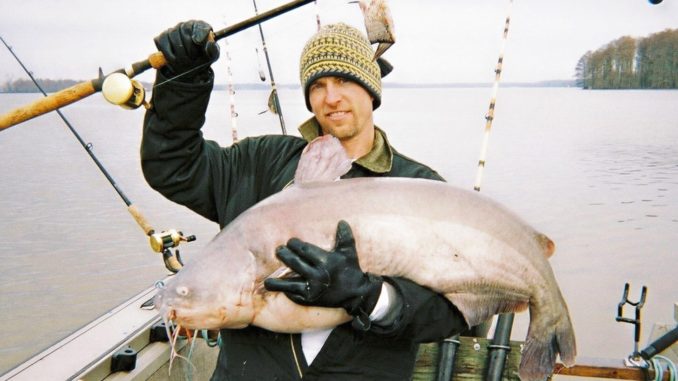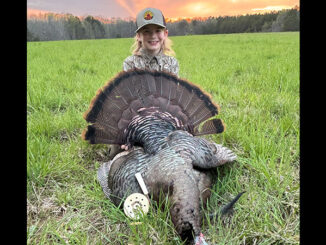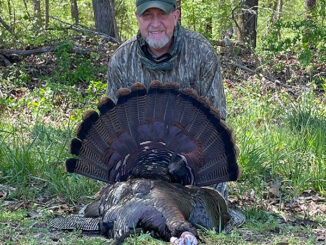
If you’re interested in catching huge catfish at Kerr Reservoir (aka Buggs Island), a 50,000-acre impoundment straddling the N.C.-Virginia border, be sure to take an ultra-light rod, 4-pound-test line, a small hook and some earthworms.
That’s not as ridiculous as it sounds when you know such tackle is required to catch baitfish for flatheads.
“Flathead catfish love to eat warmouths more than anything,” said Steve Tollerson of Clarksville, Va., a veteran Buggs catfish guide. “But I also have caught ’em on live shad, live bream, small crappie and even largemouth bass.”
Only a few restrictions exist regarding use of gamefish for catfish baits at the North Carolina or Virginia sections of the lake. The two states have nearly identical regulations.
“You can’t use a net to catch bream, crappie, bass or warmouth,” Tollerson said. “You have to use a rod and reel; then you can put ’em in your baitwell and go fishing for catfish with ’em. But you can catch shad (gizzard or threadfin) with a net in North Carolina (a strange situation, however, has Virginia restricting anglers to 20 non-game fish — shad, for instance — caught with a net, so anglers catch their shad on the N.C. side of the lake).”
Tollerson said some guides use bass to fish for flatheads (aka “yellow” or “mud” cats), but he doesn’t use bass baits because the lake limit is just five bass per day and only two may be less than 14 inches in length. That rule’s the same for all sections of Kerr Lake, so anyone depending upon bass for flathead baits likely will have a short fishing trip.
The other big catfish at Kerr Reservoir are Arkansas blue cats, with the No. 1 Buggs blue cat weighing 92.28 pounds and caught by Willie Zost of Roxboro.
But blue cats prefer dead cut bait, fished on the bottom with Carolina rigs.
“(Blue catfish) are scavengers,” said Tollerson (W&W Outdoors Adventures, www.kerrlake.com/whiskers/, 434-374-2245). “You’d think it’s the other way ’round because the flatheads are kinda yellow and brown and look dirty, but flatheads like live bait while blue cats will eat anything.”
Strong equipment (medium-bend 5 1/2-foot-long rods, 50-pound-test braided line spooled onto Ambassadeur 6500 reels, 30-pound-test leaders and 7/0 hooks are needed when tangling with catfish that can average 30 pounds and often tip the scales (and tow boats around the lake) because they weigh 50 pounds or more.
You might want to contact Tollerson and his buddy, Chris Coleman, but they are semi-retired and only agree to take a few people catfishing at Kerr/Buggs these days.
Tollerson also said he’d request anyone catching a large catfish to weigh it, measure it, take photographs, then release it alive back into the lake.
“That will preserve good catfishing for the rest of us,” he said. “You might be releasing an egg-laden female, especially a blue cat this time of year because now’s when they make spawning runs up the Dan and Staunton rivers. And if you fish for catfish, please use circle hooks. I use ’em and they work; I catch 99 percent of my yellow cats in the corner of the mouth with circle hooks. You’ll avoid gut hooks and possibly killing the fish.”
W&W represents “Whitetail” (Tollerson) and “Whiskers” (Coleman), their C.B. radio handles.





Be the first to comment